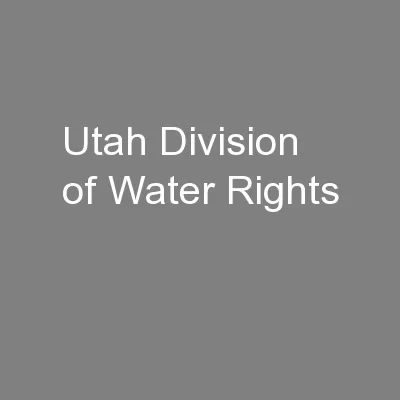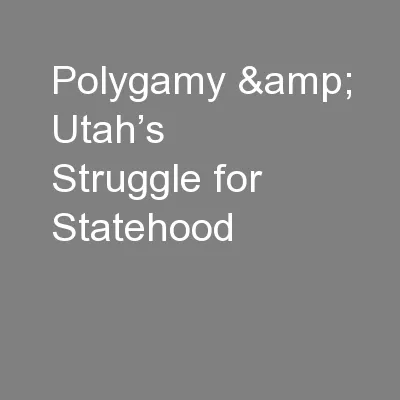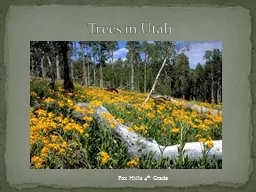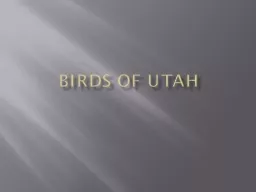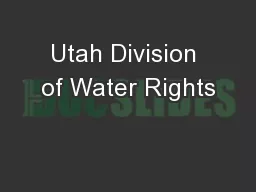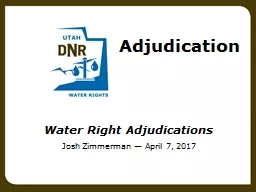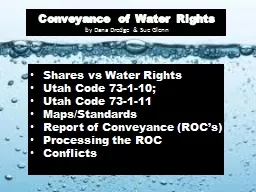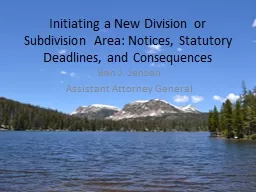PPT-Utah Division of Water Rights
Author : tatiana-dople | Published Date : 2016-03-16
Blake W Bingham PE Adjudication Program Manager wwwwaterrightsutahgov Utah General Adjudications April 27 th 2015 Historical Context The Pioneer Era July 23 1847
Presentation Embed Code
Download Presentation
Download Presentation The PPT/PDF document "Utah Division of Water Rights" is the property of its rightful owner. Permission is granted to download and print the materials on this website for personal, non-commercial use only, and to display it on your personal computer provided you do not modify the materials and that you retain all copyright notices contained in the materials. By downloading content from our website, you accept the terms of this agreement.
Utah Division of Water Rights: Transcript
Download Rules Of Document
"Utah Division of Water Rights"The content belongs to its owner. You may download and print it for personal use, without modification, and keep all copyright notices. By downloading, you agree to these terms.
Related Documents

